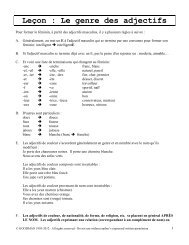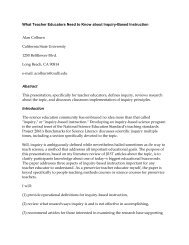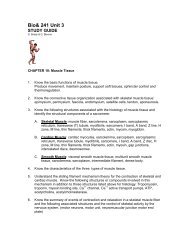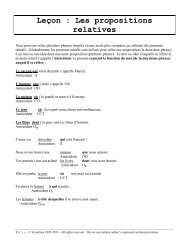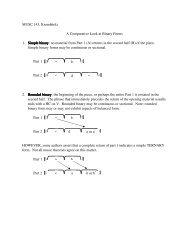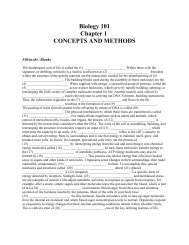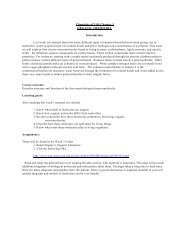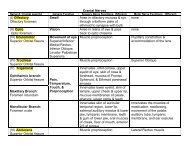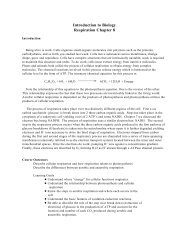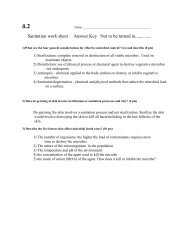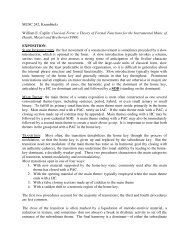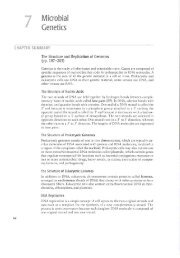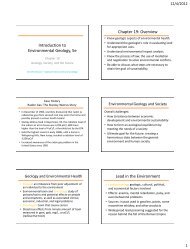Biology Chapter 7 Photosynthesis
Biology Chapter 7 Photosynthesis
Biology Chapter 7 Photosynthesis
Create successful ePaper yourself
Turn your PDF publications into a flip-book with our unique Google optimized e-Paper software.
42. Cyclic pathway - photosystem I onlya. In the cyclic pathway of ATP formation, electrons are first excited, pass through andelectron transport system, and then return to the original photo-systemb. The cyclic pathway is an ancient way to make ATP from ADP; used by early bacteria.3. Noncyclic pathway -- photosystem IIa. The noncyclic pathway of ATP formation transfers electrons through two photosystemsand two electron transport systems in the thylakoid membranesb. The pathway begins when photosystem II absorbs energy splitting water to harvest electronsand hydrogen releasing O 21) Boosted electron moves through a transport system that releases energy fromADP + PiATP2) An electron fills “hole” left by an electron in photosystem Ic. Pathway continues when Photosystm I absorbs sun light energy1) Energy hole is filled by electron from photosystm II2) Boosted electron from Photosystem I passes to acceptor, through the electron+transport system and finally the electron joins NADP to form NADPH (which alongwith ATP can be used in the synthesis of organic compounds)D. Oxygen1. Oxygen is a by product of the noncyclic pathwayIV. Dark (Light-Independent) RxnA. Overview1. The participants and their roles in the synthesis of carbohydrate area. ATP, which provides energyb. NADPH, which provides hydrogen atoms and electronsc. Atmospheric air, which provides the carbon and oxygen from carbon dioxide.2. These reactions are not dependent on sunlight directly (hence, light independent reaction)




